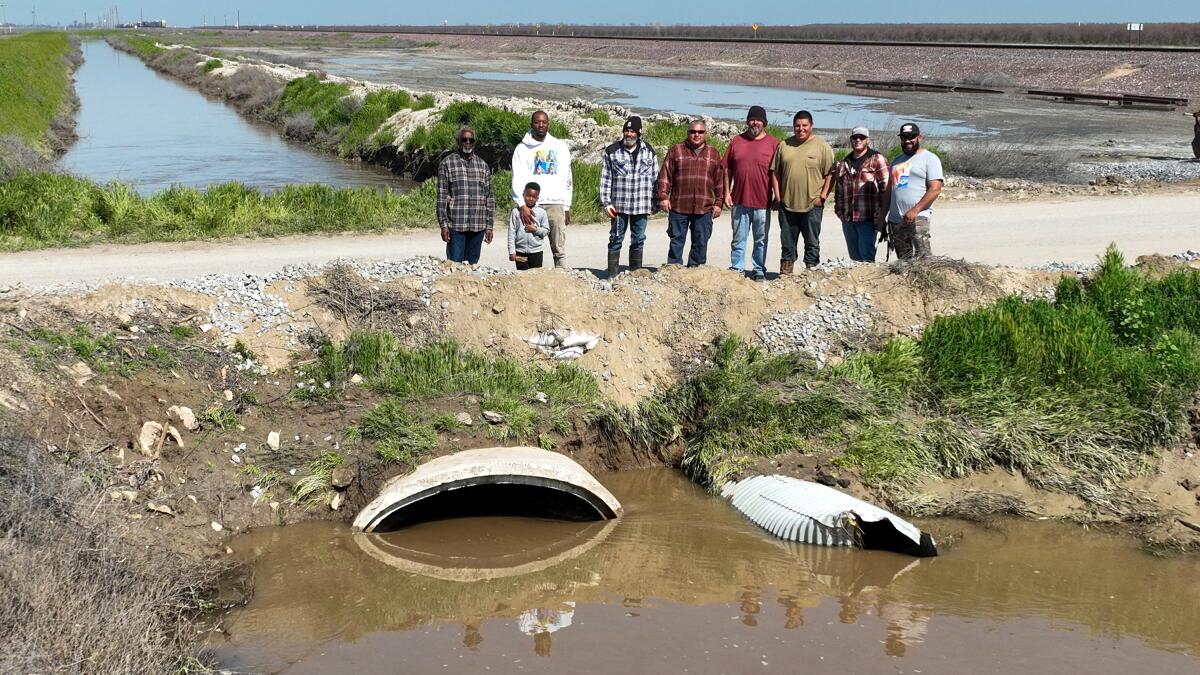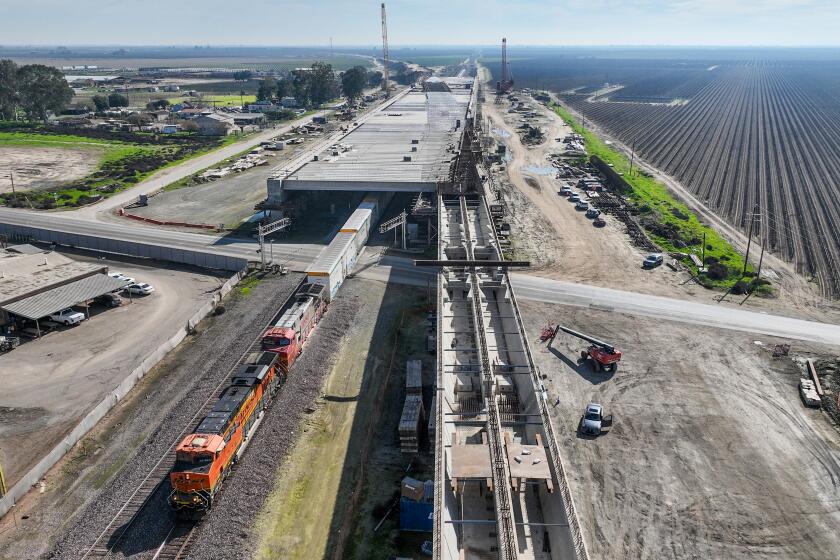Thousands of Central Valley residents told to leave homes ahead of another rain onslaught

- Share via
It takes only the sound of raindrops hitting the roof to seize Tulare County resident Tony Ferranti with thoughts of filling sandbags, restocking supplies and keeping a close watch on area bridges.
“It’s sort of a flood PTSD,” Ferranti said Sunday, as he and thousands of others prepared for the arrival of the latest in a series of major storms that have hit the Central Valley since January.
The new weather system, which began moving into the region on Sunday and stretches across the lower third of the state, is forecast to drop another 4 inches of rain by Wednesday on the sodden valley and its steep mountain slopes.
Tulare County Fire Chief Charlie Norman said more than 11,000 people live in communities covered by mandatory evacuation orders and another 3,700 in areas with evacuation warnings.
As residents prepared to leave and others lugged sandbags to protect their homes, some of their misery appeared aggravated by a growing struggle over whose property would be flooded and whose would remain dry.
The Tulare County sheriff’s office on Sunday ordered the lowland communities of Alpaugh and Allensworth evacuated in response to what the sheriff called a “breach in some waterways that led to flooding.” A local flood control official said someone cut open the levee with a backhoe, and that the flood control district had reported the damage to law enforcement.
Other evacuation orders were issued for parts of Exeter, Cutler, Teviston and Porterville and extended Sunday afternoon along the Tule River, where homeless encampments had been.
“We have a lot going on, but our priority has been to life,” Sheriff Mike Boudreaux said during a Sunday afternoon community briefing. Boudreaux said 50 deputies went door-to-door Sunday to tell approximately 1,000 residents of Allensworth and Alpaugh to consider leaving their homes.
There was no immediate response from the sheriff’s office about whether the levee had been intentionally cut. A crew was working to repair the breach on Sunday.
The nearby community of Allensworth lies on land where rivers once fed Tulare Lake before it was drained to serve agriculture in the early 1900s. The latest storms have sent floodwaters surging through canals and ditches, and flowing across farmlands toward the old lake bottom in Tulare County.
Residents in Allensworth have been battling the floodwaters over the past several days by building berms with gravel and sand to contain the rising water in ditches that flow past the town.
The Tulare Lake basin is at the center of conflicts over where to direct the rising water, at times pitting large agriculture operations against low-income communities, and infrastructure such as railroads.
Jack Mitchell, head of the Dear Creek Flood Control District, said he was struggling to reach large landowners to convince them to agree to flood their almond and pistachio orchards in order to spare homes. If he could move water into those historic channels, he said, “we can have roads in and out, and the towns would be out of danger and everything, if we just had a little help.”
Instead, Mitchell alleged, a major landowner blocked a channel with a large piece of equipment, impeding flood-control work.
“And they even blocked the roads so we can’t get into our equipment to fight the flood,” Mitchell said. He said he has been unable to reach a company representative to complain.
“So they’re just wanting us to flood everything but them,” he said. “It’s pitiful.”
On Sunday, residents weary from the monthlong battle against rising water were preparing to be marooned.
“We may not get flooded. But the roads will be flooded, so we will be an island,” said Tekoah Kadara, a 41-year-old resident who had already arranged to send his 5-year-old son to stay with his mother. He and his father intended to remain behind to protect their house.
“We won’t be able to get out,” he said. “So community members are already talking about purchasing small little boats and canoes and things like that, so they can get in and out of the community.”
The latest storm system is among more than a dozen that have boosted California reservoirs but also washed out roads and contributed to the deaths of at least 13 people. Sunday’s drizzle was expected to increase to heavy rain and thunderstorms by Monday, blanketing the southern third of the state, said National Weather Service meteorologist Scott Rowe.
The back-to-back-to-back storms have also wreaked havoc in Tulare County’s remote mountain communities, where rushing creeks and rockslides have taken out roads and bridges. Ferranti was among some 160 people stranded for a week after high water topped bridges over the South Fork River and entirely washed out one across Cinnamon Creek.
Unable to get updates from county officials besieged by breached levees and submerged roads, residents of the remote community fell to their own devices. They pulled supplies across the raging creek in a milk crate suspended from ropes. Ferranti arranged for critical medications for his elderly mother-in-law to be delivered by drone.
The reopened road and a bit of blue sky on Saturday only meant that Ferranti, working on four hours sleep, needed to lay in a three-week supply for his family and their farm, and must fill 50 sandbags to shore up the front door and garage.
“Fire, you try to get away from,” he said. “Flooding, you get trapped. If we have to evacuate, where do we go because the valley is in as much danger?”
Tulare County is struggling to assess the damage from a succession of heavy rains and snows. More than 100 people since early March have been rescued from high water. Some 674 structures, including homes, have been damaged in the besieged county, according to Sunday’s emergency management report by the California Department of Forestry and Fire Protection. Temporary shelters as of Sunday held 100 people, county officials said.
With up to half an inch of additional rain on Sunday, and as much as 4 inches by midweek, a flash flood watch was issued for the Sierra foothills, as well as Fresno and Tulare counties, through Monday.
The two national parks in the area — Sequoia, with its fabled giant trees, and Kings Canyon — were closed and expected to remain so well into the spring. That has meant the closure of vacation cottages in the mountainous region, an economic hit that extends to rural residents who work as cleaners and caretakers.
“The properties may not be damaged, yet, but it’s damaged people’s businesses,” said Junee Gambin, whose cottages in Mineral King are now shuttered for all of March, if not part of April, and her workers worry about the fate of their trailer homes in the valley.
More to Read
Sign up for Essential California
The most important California stories and recommendations in your inbox every morning.
You may occasionally receive promotional content from the Los Angeles Times.












